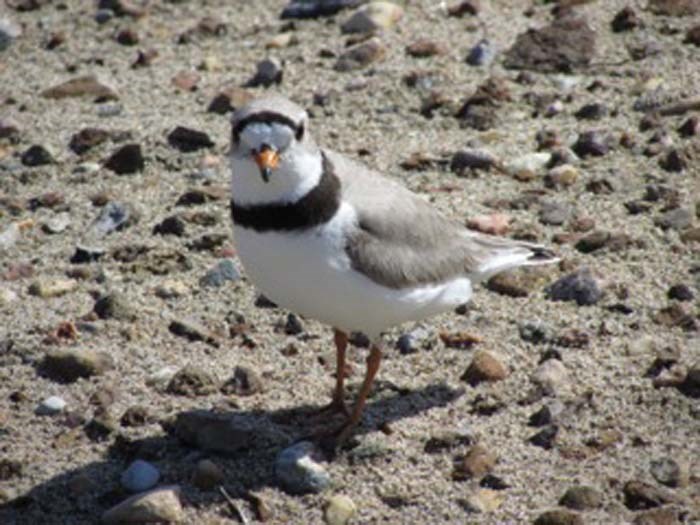With the recent heat, it is time to head out to the beach on the weekend and bask in the sun along our beautiful Saskatchewan shorelines. Be on the lookout though, as this is also the time when the endangered Piping Plover shorebird will be on those same shorelines for a different reason…to nest!
The Piping Plover was designated as endangered in 1985, and remains listed as endangered due to low population numbers; ~764 plovers were seen in Saskatchewan during the 2011 international census, down from 1,435 in the previous 2006 census. “There are a number of factors contributing to their low numbers”, explains Rebecca Magnus, Plovers on Shore coordinator, “and one of those is human activity along shorelines”.
In mid-May the female Piping Plover lays four, well-camouflaged eggs along many of our Saskatchewan shorelines such as Lake Diefenbaker. The eggs are speckled, and blend in with the surrounding gravel and sand. Both parents incubate the eggs over ~28 days. The peak hatching occurs in mid-June. “Since Piping Plover eggs are very difficult to see and easy to accidentally trample, we are asking the public to watch carefully as they enjoy the sunshine along our shorelines during this critical time”, says Magnus.
You may also see the Piping Plover adult first, before you see any eggs. They have distinctive black markings - a single black neck band, a black band on the forehead, and a short black-tipped orange bill. “While similar, they can easily be distinguished from
Killdeer based on their smaller size, the single neck band versus the two bands found on Killdeer, and their lighter colour”, adds Magnus.
Additionally, you may hear a Piping Plover calling for your attention and when you look over you may observe it running away, faking a broken wing. The Piping Plover is one of the few shorebirds to display this action, which it uses to distract predators away from its nests in order to protect it.
If you come across a nest site or think you may have seen a Piping Plover, please call our toll free Hoot Line at: 1-800-667-HOOT (4668).




